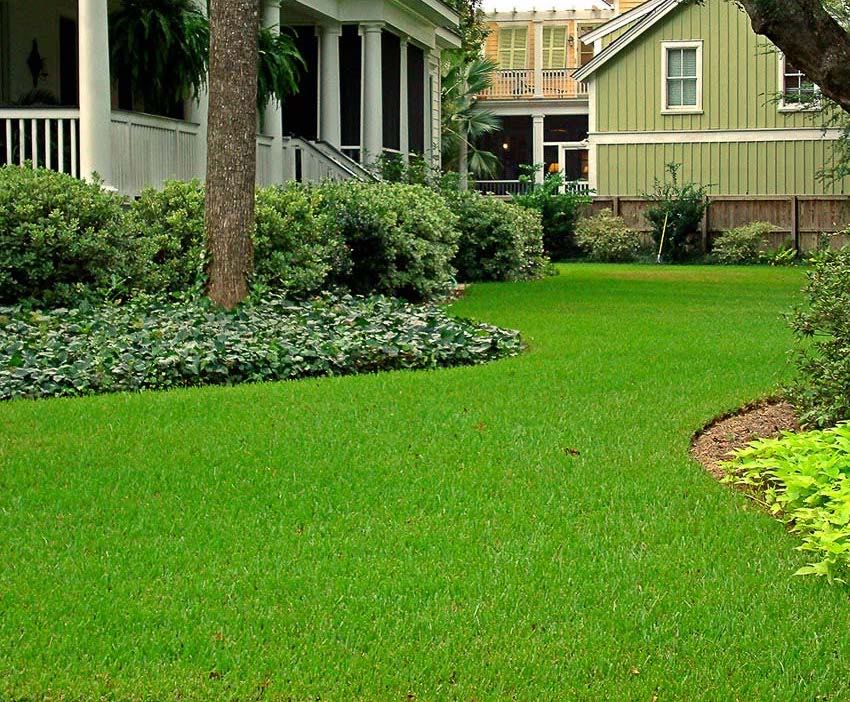St Augustine grass variety is a fixture throughout a number of states, from Carolina on south. In fact, the grass originally native to the West Indies and West Africa is now the most common lawn grass in the state of Florida.
Characteristics of St Augustine Grass
Each cultivar of St Augustine has its own specific characteristics.
Overall, the St Augustine grass species has a well-deserved reputation as a “carpet grass”. This is because, unlike other types, it grows completely above ground through the production of stolons. Its typical color ranges from blue-green to a darker emerald green, which makes it an attractive feature in gardens.
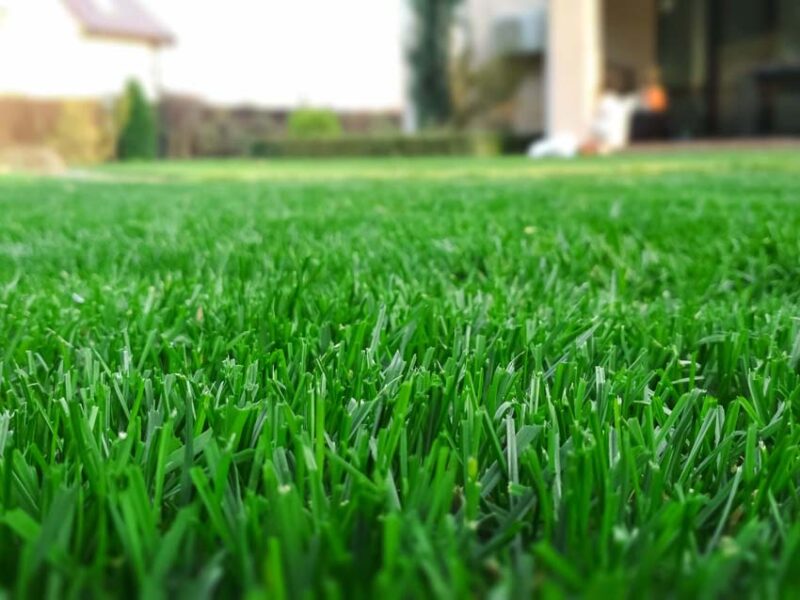
This species generally grows in the coastal states because it can tolerate high-salt soil and adapts well to most soils in the southeastern states. St Augustine grass grows coarse blades and large flat stems. When you properly care for it, it develops into lush, dense turf.
Our St Augustine grass care guide sets out an effective care program, so keep reading.
Common Grass Varieties
Over the years, a number of different St Augustine cultivars have appeared on the market. The three main varieties of this grass are Seville St Augustine, Palmetto St Augustine, and Floratam St Augustine.
Let’s take a closer look.
Seville St Augustine
The Seville St Augustine grass is a dwarf variety of the original and accounts for its finer texture. The main benefit that this grass brings to lawn owners is that it retains good color all year round. Additionally, it tolerates both shade and dry soil impressively, even surviving months of drought before beginning to wilt.
Naturally, Seville is an ideal choice for homeowners who want an attractive lawn without the major effort other types of grass require.
Palmetto St Augustine
A semi-dwarf variety, Palmetto St Augustine grass has a medium-width blade and gives lawns a plush appearance and feel. The soft texture comes from the round ends of the blades.
Moreover, Palmetto retains its color longer than any other St Augustine variety and will even remain green in sub-zero temperatures. It can also tolerate a couple of frosts before going dormant.
Floratam
Growers breed Floratam St Augustine grass specifically for resistance to both grass diseases and chinch bugs . The blades in this variety are the longest and thickest of the St Augustine cultivars and give lawns a plush, dense appearance.
Floratam grows rapidly and so needs more frequent mowing and much more sun than its Seville and Palmetto cousins. Like other St Augustine varieties, Floratam keeps its color well and is quite resistant to drought.
Benefits of a St Augustine Lawn
St Augustine is a wonderful option for your lawn, provided you live in a climate that favors its growth and care. Unlike other types of grass, it does not require as much sun as other common turf options. It is a great choice for coastal states due to its tolerance to saline soil and how well it performs in hotter climates.
Furthermore, St Augustine is a robust grass option for lawns due to its ability to hold its beautiful color, even in times of drought. It grows quickly and densely and outpaces the rapid growth of weeds.
Drawbacks of a St Augustine Lawn
That said, this variety of grass comes with some disadvantages. While it tolerates cool weather fairly effectively, it does not do well in very cold climates.
Moreover, it may not be the best choice for lawns that are likely to receive high foot traffic. St Augustine is also quite susceptible to attacks from pests, grass diseases, and thatch.
Growing St Augustine grass In Your Home
Unlike other types of grass, St Augustine seeds cannot be planted directly into your soil. As a plant, the grass does produce a small amount of seeds, but not in sufficient amounts for commercial sale or lawn propagation.
The best option is to grow your lawn via sod that you roll out over your lawn area.
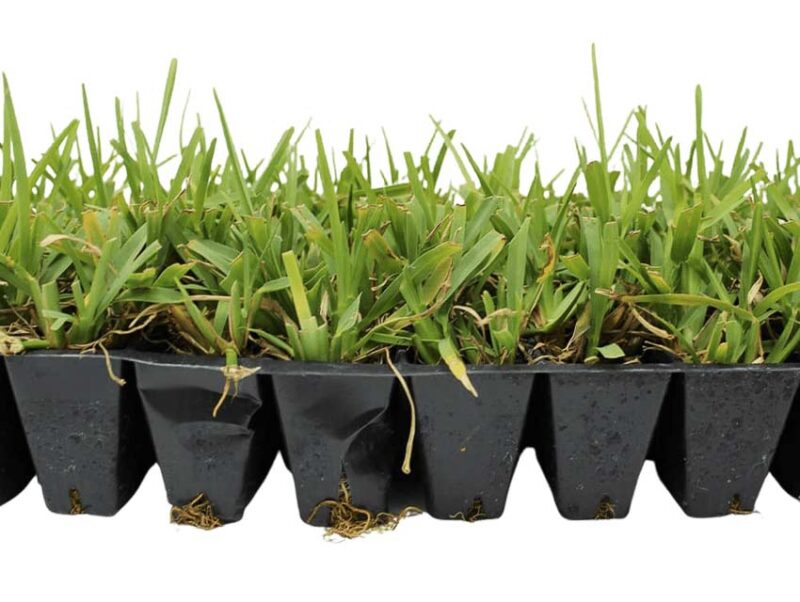
If growing your lawn via sod is not for you, another option is St Augustine grass plugs. Grass plugs are pre-germinated sections of turf between 1.5 to 3 inches, which you can insert into your lawn. Normally used for remedying brown areas in lawns, grass plugs are a good way to start a St Augustine lawn.
Laying St Augustine Sod
If you decide to grow St Augustine grass, you will need to lay sod. Laying St Augustine sod is little different than laying other types.
First, you have to test the soil to ensure that it is a good fit for St Augustine grass. Then, measure the area you plan to lay with sod and prepare the area by killing and removing old grass.
Next, level and prepare the soil for the sod. Once you lay the sod, you will need to roll it out to fit the lawn area. After you have laid down the whole area, water and fertilize your new lawn accordingly.
Caring for St Augustine Grass
Although our St Augustine grass care guide details a good way to maintain this type of lawn, be aware that this is a general guide. If you plan to grow a specific variety of St Augustine, like Palmetto or CitraBlue, it pays to see if they have different care requirements.
St Augustine grass needs mowing regularly to make sure that its blades remain between 2 and 4 inches high. In terms of a watering schedule, this grass thrives with at least an inch of water per week. Of course, this varies depending on the climate and weather conditions.
Additionally, St Augustine grass requires frequent applications of other chemicals for it to grow optimally. This includes fertilizer, weed, insect and pest control products. You should also apply fungicides in early spring and in the fall, when diseases are more common.
Choosing the Best Fertilizer for St Augustine Grass
Adding fertilizer to your lawn is a critical part of St Augustine grass care. While the choice of fertilizer on the market may seem daunting at first, there are some simple factors to consider.
Ideally, your first priority is to know what kind of soil you have where you’ll lay the sod. Knowing the contents of your soil will help you in selecting a grass fertilizer. One way to determine this is by submitting a soil sample for analysis at your local extension office .
At this point, it is important to know about N-P-K ratios and their importance in grass nutrition. An N-P-K ratio is the ratio of nitrogen, phosphorus and potassium that a fertilizer has and is outlined on the product’s label. Based on your climate and soil components, you will need to choose an N-P-K ratio that will feed your grass what it needs.
Fertilizer comes in either liquid or granular form. Some brands even prepare multi-packs containing different N-P-K combinations for lawn owners to use depending on the season. If you are growing St Augustine grass for the first time, you will need to use a fertilizer for new lawns.
Dealing with Infestations
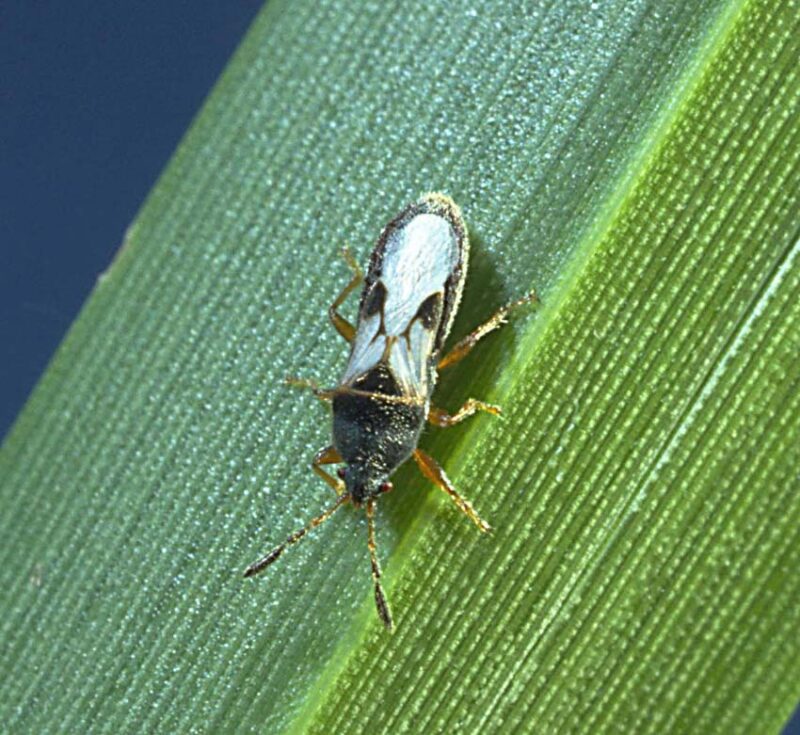
Unfortunately, St Augustine grass is not just appealing to humans, but also to a variety of unwanted insects. Pest infestations are no joke and can undo your hard work in a matter of weeks if not stopped in time. In short, infestations are both stressful and costly.
Southern chinch bugs are the biggest threat. Part of the problem with this insect is their small size, making them hard to see.
If you are inspecting your grass for these tiny pests, examine the area where the lawn meets the pavement, driveway, road, and so on. This will give you a sideview of the blade where the bugs live.
Chinch bugs feed on the chlorophyll from the grass, which often makes their presence appear to be the result of drought.
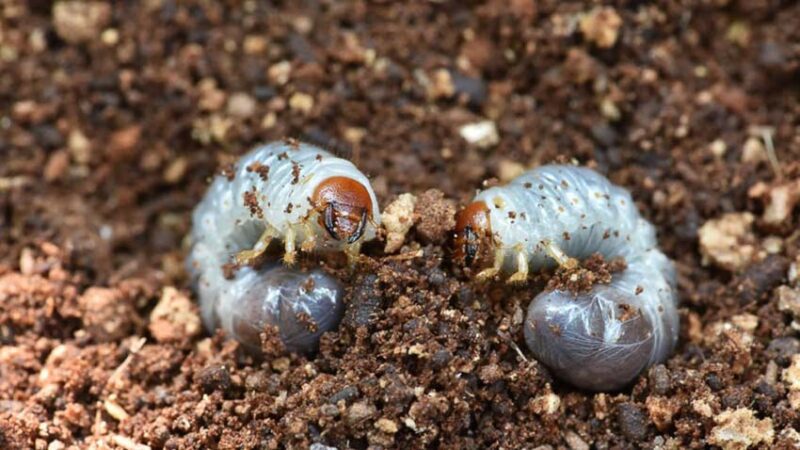
Other bugs to keep an eye out for are grub worms , sod webworms , and fall armyworms , which feed on the grass blades until they look transparent–a process known as skeletonizing.
Spittlebugs and mole crickets can also cause harm. Of course, this is not an exhaustive list, and there are many more bugs that can call your lovely lawn home. So, stay alert!
Common Lawn Diseases
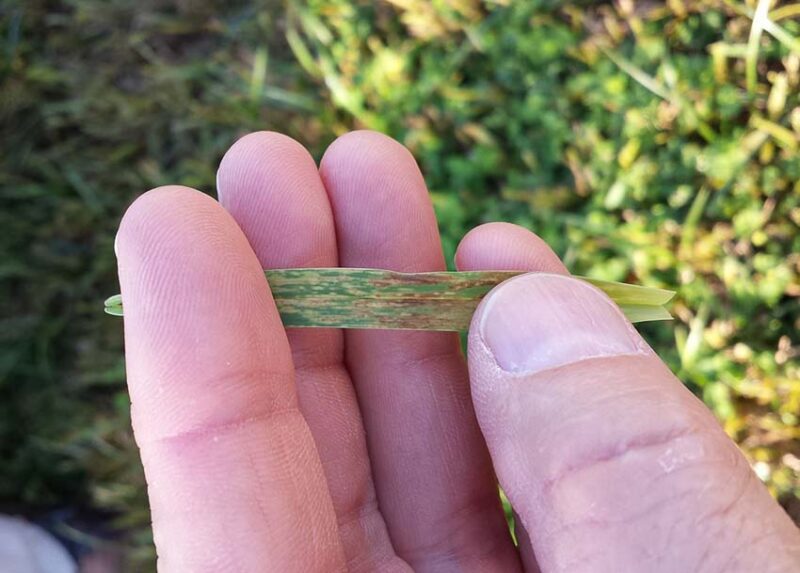
Apart from using preventative measures against bugs, grass diseases can also wreak havoc on lawns. Disease outbreaks are more prevalent during the spring and fall due to the change in temperature.
Keep an eye out for grass diseases known to attack St Augustine lawns, such as gray leaf spot , cercospora leaf spot , large patch , bipolaris leaf spot , and leaf rust . With the Floratam variety, owners need to be aware of the lethal viral necrosis , which unlike the aforementioned is a virus and not a fungus.

